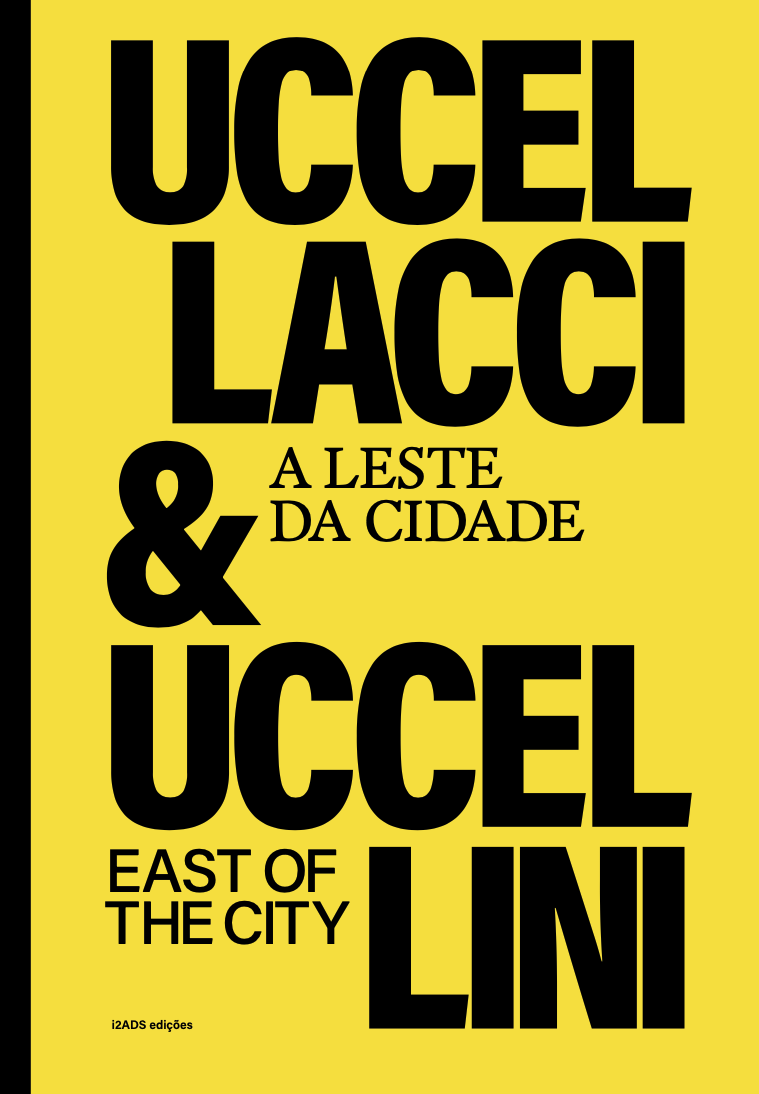
book
Uccellacci e Uccellini: A Leste da Cidade
For this book we depart from the particular dynamics of Oporto, attempting to interweave different perspectives on a city that runs the risk of erasing all the unprogrammed empty spaces, with its ruins and informality that are often the lines of escape to the economic processes of the physical and social transformation of the urban space. Despite this, we are not bound to any geography. Being of heading to the East of the city refers not only to a cardinal point but rather everything that escapes the clutches of fixed trajectories or determined directions, enabling the free rethinking of the ways in which communities are organised and moved, reinventing the territory beyond the formal instruments of urbanism, whether of the official culture or that of the intensive production of capital. Finally, we make reference to these forces that come from the past, hidden away in the folds of history, of territories and their people, and that we should know how to welcome, listen and interpret. Thus, this book could carry no other name. The hawks and the sparrows of Pasolini are also the social, political and economic forces that move within the city.
- Edição
- Miguel Leal
- Ano
- 2023
- isbn | issn
- 978-989-9049-41-3
- doi
- https://doi.org/10.34626/2023/978-989-9049-41-3
Friends, where are we going? East of the city?
Uccellacci e uccellini (The Hawks and the Sparrows, 1966) constitutes a unique object in the filmography of Pier Paolo Pasolini. This film is a kind of modern fable, a voyage on foot heading through the surroundings of Rome and returning to the times when animals talked and humans talked to animals. This is also a fine example of the cinema of poetry that Pasolini himself made reference to in an already mythical text on cinema, language and communication, where he highlights how cinema is fundamentally a language of poetry in which there prevails the expressive and oneiric violence of images meaning, in a kind of raw state, because the irrational element of cinema cannot be eliminated. Pasolini recalls in this text that “there is no dictionary of images”, that there are no classified and ready to use images, thus cinema is always the place of linguistic invention. If we communicate by words and not by images, to say that there is a “specific language of images” would be a “mere artificial abstraction”. Indeed, there is no dictionary of images but we are used to reading reality, conversing with it through images, whether with our feet firmly on the ground or with our heads in the clouds, in the complex exercising of memory or in the world of dreams. Pasolini goes still further in stating that, different to more instrumental forms of communication, “visual communication, which is the basis of cinematographic language is on the contrary extremely crude, almost animalesque.” In its way, Uccellacci e uccellini, with its talking crow and the guiding figure of Antonio de Curtis “Totò”, with the sermon to the birds or the encounter with the wandering troupe, is a fable built out of allegories, of pictures within pictures, images within the film, and of the map of a path that turns into the path itself to become an expression of this world of memory and dreams that Pasolini identified as the cinema of poetry.
Not only due to the presence of Totò, il Principe della risata who had been a feature in Italian cinema since the 1930s, Uccellacci e uccellini is also a tribute to the history of cinema and figures such as Chaplin or Keaton. The film begins and ends precisely with Marcello “Totò” and his son Ninetto walking and talking as they head along the road amidst the dust. At first, heading towards us so that we are able to see and listen. At the end, far off, towards the horizon line that awaits them in a very classical shot. And what could be more cinematic, as an originating act, than wandering along the road, in a continuous dialogue with the world that gets expressed through the images that compose it, these things that become images and that parade around us?
Totò and Ninetto, in a type of road movie prior to the era of the motor, wander down unfinished roads and cross old farms and agricultural terrains lost amid concrete pillars, earth-moving and embankments, signs of the frenetic pace of construction ongoing on the outskirts of Rome and many other Italian cities in the 1950s and 1960s, finishing off the work the war had not been able to complete. The reason for their walking never becomes clear, which seems more of a pretext for various different encounters rather than a gesture with a purpose. Suddenly, in the middle of a curve of an unfinished viaduct, they hear a voice:
— Amici, dove andate? Non mi volete come compagno di strada, eh?
Text extracted from Friends, where are we going? East of the city?
Miguel Leal
Translated by Kevin Rose
2023